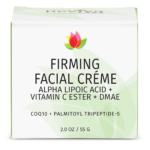Urea
Urea in skincare refers to a compound that is naturally present in the skin and used as a moisturizing ingredient in many skincare products. It’s known for its hydrating and keratolytic properties, meaning it helps to retain moisture and gently exfoliate the upper layers of dead skin. This makes urea an effective ingredient for treating dry, rough, and scaly skin conditions, such as eczema, psoriasis, and ichthyosis.
In skincare products, urea is often synthesized and used in various concentrations. Lower concentrations (like 2-10%) provide excellent hydration and are suitable for sensitive skin. Higher concentrations (up to 40%) have more potent exfoliating properties and are used to treat thicker, rougher skin areas or specific skin conditions under medical supervision.
Urea enhances the skin’s capacity to retain water and improves skin barrier function. It’s also known for its ability to increase the absorption of other skincare ingredients, making it a popular component in many formulations.
See also: Hydroxyethyl Urea
Urea, also called carbamide (because it is a diamide of carbonic acid), is an organic compound with chemical formula CO(NH2)2. This amide has two amino groups (–NH2) joined by a carbonyl functional group (–C(=O)–). It is thus the simplest amide of carbamic acid.
| |||
| |||
| Names | |||
|---|---|---|---|
| Pronunciation | urea /jʊəˈriːə/, carbamide /ˈkɑːrbəmaɪd/ | ||
| Preferred IUPAC name
Urea | |||
| Systematic IUPAC name
Carbonyl diamide | |||
Other names
| |||
| Identifiers | |||
3D model (JSmol)
|
|||
| 635724 | |||
| ChEBI | |||
| ChEMBL | |||
| ChemSpider | |||
| DrugBank | |||
| ECHA InfoCard | 100.000.286 | ||
| E number | E927b (glazing agents, ...) | ||
| 1378 | |||
| KEGG | |||
PubChem CID
|
|||
| RTECS number |
| ||
| UNII | |||
CompTox Dashboard (EPA)
|
|||
| |||
| |||
| Properties | |||
| CO(NH2)2 | |||
| Molar mass | 60.06 g/mol | ||
| Appearance | White solid | ||
| Density | 1.32 g/cm3 | ||
| Melting point | 133 to 135 °C (271 to 275 °F; 406 to 408 K) | ||
| Boiling point | decomposes | ||
| 545 g/L (at 25 °C) | |||
| Solubility | 500 g/L glycerol 50 g/L ethanol | ||
| Basicity (pKb) | 13.9 | ||
| −33.4·10−6 cm3/mol | |||
| Structure | |||
| 4.56 D | |||
| ThermochemistryCRC Handbook | |||
Std enthalpy of
formation (ΔfH⦵298) |
−333.19 kJ/mol | ||
Gibbs free energy (ΔfG⦵)
|
−197.15 kJ/mol | ||
| Pharmacology | |||
| B05BC02 (WHO) D02AE01 (WHO) | |||
| Hazards | |||
| GHS labelling: | |||

| |||
| NFPA 704 (fire diamond) | |||
| Flash point | Non-flammable | ||
| Lethal dose or concentration (LD, LC): | |||
LD50 (median dose)
|
8500 mg/kg (oral, rat) | ||
| Safety data sheet (SDS) | ICSC 0595 | ||
| Related compounds | |||
Related ureas
|
Thiourea Hydroxycarbamide | ||
Related compounds
|
|||
Except where otherwise noted, data are given for materials in their standard state (at 25 °C [77 °F], 100 kPa).
| |||
Urea serves an important role in the metabolism of nitrogen-containing compounds by animals and is the main nitrogen-containing substance in the urine of mammals. Urea is Neo-Latin, from French urée, from Ancient Greek οὖρον (oûron) 'urine', itself from Proto-Indo-European *h₂worsom.
It is a colorless, odorless solid, highly soluble in water, and practically non-toxic (LD50 is 15 g/kg for rats). Dissolved in water, it is neither acidic nor alkaline. The body uses it in many processes, most notably nitrogen excretion. The liver forms it by combining two ammonia molecules (NH3) with a carbon dioxide (CO2) molecule in the urea cycle. Urea is widely used in fertilizers as a source of nitrogen (N) and is an important raw material for the chemical industry.
In 1828, Friedrich Wöhler discovered that urea can be produced from inorganic starting materials, which was an important conceptual milestone in chemistry. This showed for the first time that a substance previously known only as a byproduct of life could be synthesized in the laboratory without biological starting materials, thereby contradicting the widely held doctrine of vitalism, which stated that only living organisms could produce the chemicals of life.














